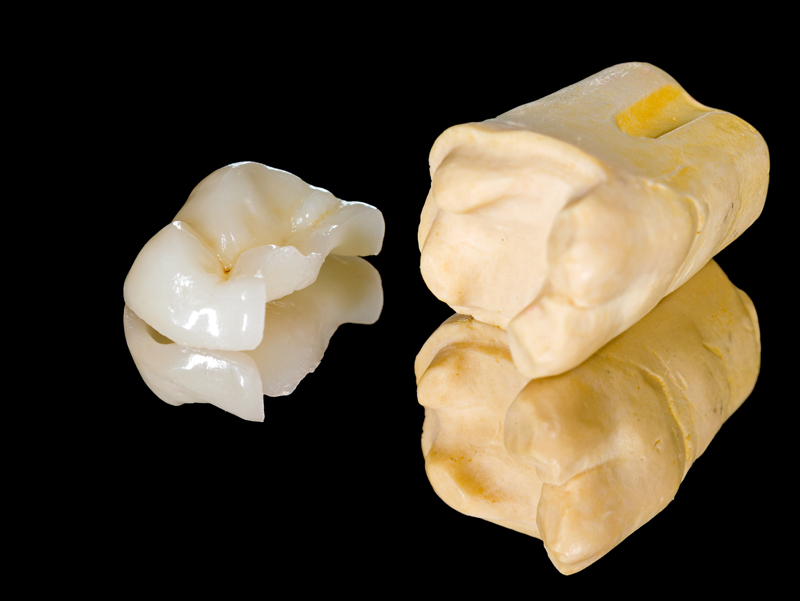In cases where the majority of the larger part of the crown teeth is damaged by decay or trauma, but not enough to indicate the implementation of ceramic or metal-ceramic crowns, the best recommendation should be the laboratory-made fillings – Inlay or Onlay.

Inlays / Onlays are dental restorations that are made in the laboratory on the basis of previously collected imprint of the prepared cavity. The difference between these two concepts is that onlay partially or completely covers the chewing surface of the tooth and the inlay is a filling which is covered by the dental substance. Inlays onlays are made of composites, ceramics or gold alloy.
When selecting materials for their production, porcelain has an advantage because of its resistance to depletion and discoloration (in contrast to composites).
Since inlays / onlays are made in the laboratory, two clinical appointments are required. During the first visit existing fillings, damage or decay is removed and the cavity is adequately prepared for the new recoupment. Then the dentist takes an imprint that is sent to the laboratory and temporarily closes the cavity. At the next visit, after the removal of temporary fillings, it is checked whether the finished inlay / on-lay adequately fits in preparation and if everything is in order, cementing and final polishing is done.
Thanks to the CAD / CAM technology, finished ceramic inlay / on-lay can be made by milling of the ceramic blocks and cemented in one visit.
Benefits of the Inlay / Onlay fillings
Traditional fillings, in large cavities, can weaken the resistance of teeth up to 50%, while Inlay / Onlay, since being made on the basis of precisely taken imprint and bind up to tooth with the highly resistant material, actually enhances durability of the tooth up to 75%. Where the damage to the teeth is large, but not enough to make the whole rosary, Inlay / Onlay provides excellent functional and aesthetic solution.


